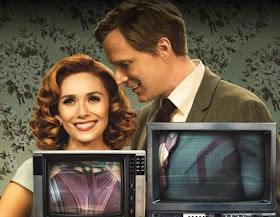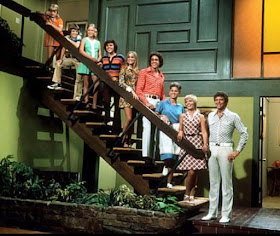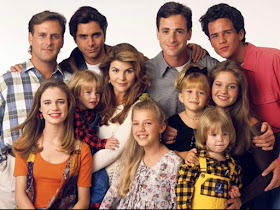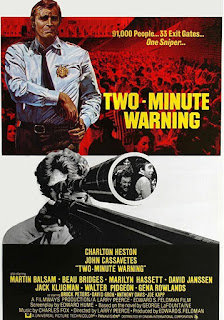By Michael Lyons
In addition to changing everyone’s weekly schedules, where we now eagerly log into Disney+ as soon as we wake up on Fridays, “WandaVision” has also provided a curious, new appetitive for classic TV sitcoms.
Since debuting on January 15th, Marvel’s latest show has had a jigsaw puzzle of an otherworldly plot that features super heroes Wanda (a/k.a Scarlet Witch) played by Elizabeth Olsen, with her sorceress-like powers and her husband Vison, played by Paul Bettany, a super-human android. The two live in an alternate reality that seems like something out of classic TV sitcoms - complete with opening credits and a theme song.
Stranger than that, each week seems to change decades, taking us from the 1950’s to present day. The episodes include impressively reproduced sets, camera work and titles that are indicative of each era.
With this, in addition to keeping us guessing about what will happen each week, “WandaVision” also keeps us wondering about what sitcom that particular episode is based on.
Wanda...er wonder...no more. What follows is a breakdown of each episode’s classic sitcom inspirations:
Episode 1: “Filmed Before a Live Studio Audience” is almost a dead-ringer for a slew of ‘50’s and 60’s landmark sitcoms and mostly resembles The Dick Van Dyke Show (which ran on CBS from 1961-1966) and starred the title character as a writer for a comedy show, who lived in his cozy home in New Rochelle, NY with his wife Laura (Mary Tyler Moore). Created by the legendary Carl Reiner, who originally came up with the idea for the show as a starring vehicle for himself, but after that pilot episode was unsuessful, the show was re-worked for Dick Van Dyke.
Episode 2: “Don’t Touch That Dial” is an homage to a number of fantasy-based sitcoms of the ‘60’s particularly Bewitched (ABC, 1964-1972), the story of Samantha (Elizabeth Montgomery) a witch who is a happily married housewife and living in modern-day suburbia. This sitcom is most notable for when Dick York, the actor who played husband Darren, was replaced in 1969 by actor Dick Seargeant. It was almost another bit of the sitcom’s magic in that both actors looked so much alike that audiences barely noticed!
Episode 3: “Now in Color” is a groovy re-do a number of 70’s sitcoms, but most notably The Brady Bunch (ABC, 1969-1974), one of the greatest “comfort food” shows in TV history, for a number of generations. Like “WandaVision,” the Bradys aren’t without their weirdness, such as whatever happened to their dog Tiger and what was the deal with Cousin Oliver?
Episode 5: “On a Very Special Episode...” came after Episode 4’s break from TV sitcoms tributes. This one seems to have taken a lot of its tone from the old TGIF ABC line-up from the late ‘80’s into the ‘90’s, most notably, Full House (1987-1995). This has a nice, full-circle feel to it, as Olsen’s two older twin sisters, Mary Kate and Ashley Olsen rose to fame playing the cuter-than-cute Michelle Tanner on “Full House.”
Episode 6: “All New Halloween Spooktacular” takes its cue from the 2000’s favorite Malcom in the Middle (Fox, 2000-2006), the now seemingly forgotten well-crafted sitcom that dared to shed a light on an imperfect, dysfunctional family, with often hilarious results.
Episode7: “Breaking the Fourth Wall” designs itself around recent, documentary-like sitcoms, in which characters talk right to the camera. This episode resembles most notably Modern Family (ABC, 2009-2020), the show that revamped the family sitcom format and kept us wondering, “What foolish, but lovable and hysterical thing with Phil Dunphy do this week?”
With only two more episodes to go and “WandaVision” continuing to keep us guessing, we can take comfort in the fact that when it ends, we can somewhat relive each surreal episode by binging on these and other classic TV shows that gave Marvel’s show its mojo.
In the meantime, we will just continue to obsessively log-on to Disney+ as our first Friday “to do” each week!

























